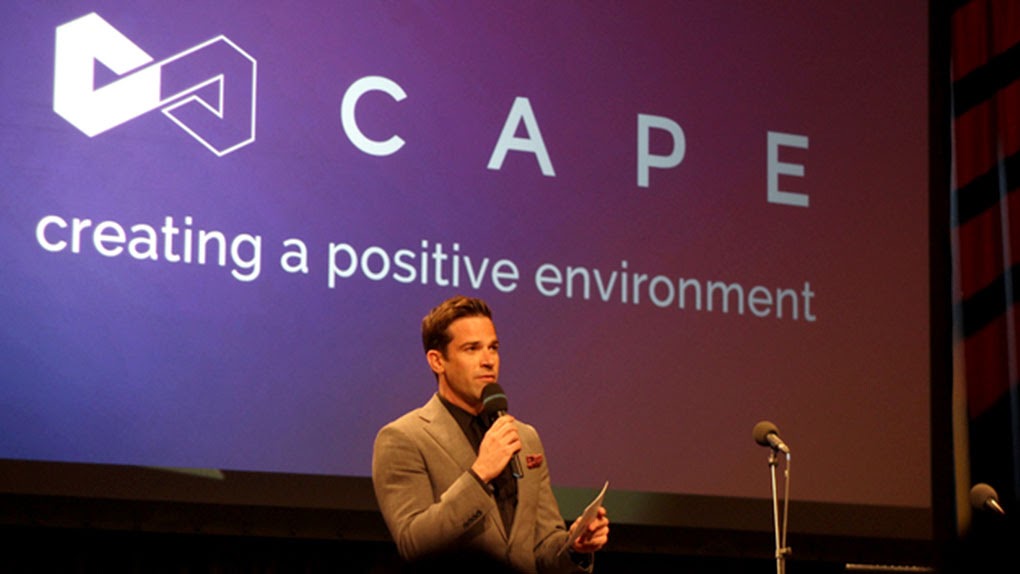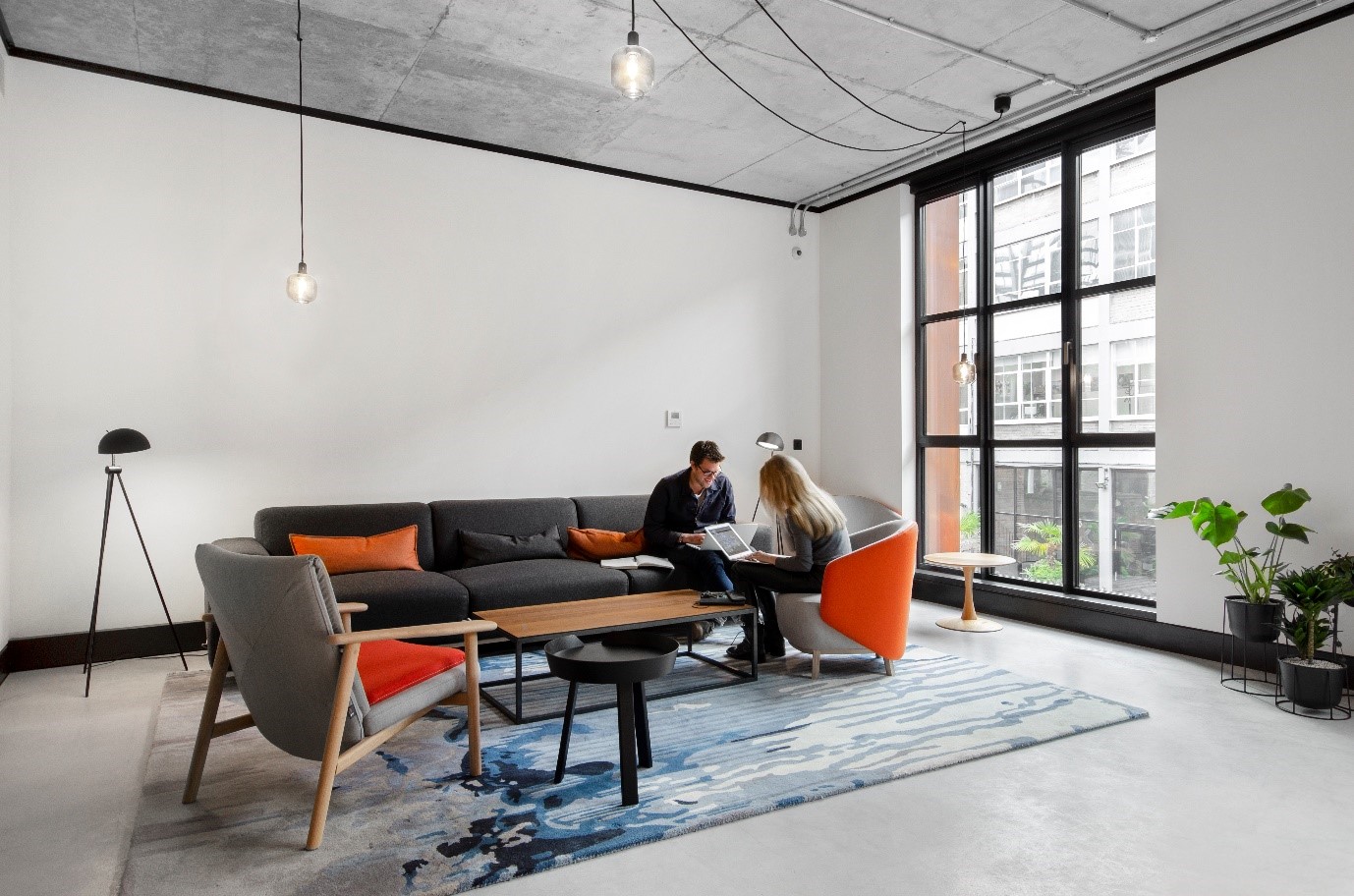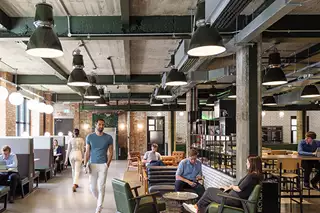Related Articles
Fresh thinking from 4,000 Creators and Innovators

How to be a great leader at any level


1 in 7 of us in the UK are “neurodiverse”, but what does it mean to be neurodiverse and how can employers adjust the work environment to cater to this particular hidden disability? Journalist Helen Parton talks to the design experts and discovers how Workspace is driving positive change.
People with more hidden disabilities like autism and dyspraxia have suffered in traditional office spaces for years, but thanks to greater government support, Invisible Illness Awareness Week and initiatives like the Sunflower Lanyard, awareness is improving.
Physical disabilities are already well catered for with ramps for wheelchair users and induction loops for those with hearing loss, but smart employers are now re-designing their buildings for those with invisible, cognitive conditions. People with these conditions can be described as “neurodiverse”.
“Humans don’t come in a one-size-fits-all neurologically ‘normal’ package”, says the Autism Awareness Centre. That slightly odd friend of yours that always says and does the ‘wrong’ thing? They might just be neurodiverse.
Neurodiversity includes conditions such as autism, ADHD, dyslexia and Tourette’s; industrial relations body ACAS defines it as “different ways the brain can work and interpret information.” Around 1 in 7 people or 15% of the population are neurodiverse, and it encompasses a range of characteristics that can vary from individual to individual, according to ACAS.
Neurodiverse people can bring creativity and innovation to the working environment. Virgin boss Richard Branson has spoken about his struggle with dyslexia and “how much we judge others on their ability to spell – when in reality most of the time this has little effect on our ability to do our work effectively.”
Under the Equality Act 2010, people with disabilities – whether they are visible or not – can ask for reasonable adjustments to help them do their job. This means that businesses have a duty to offer help to employees. Enlightened employers, particularly those that draw on the creative talent of those on the neurodiverse spectrum, are developing ways to design the working environment accordingly.
The BBC, for example, even has its own neurodiversity initiative, BBC Cape. This looks at everything from using the right colours and contrasts in manifestations, fabrics and flooring down to training reception staff to help people navigate their way around. BBC Cape is working with ID:SR, the interior design group of architects Sheppard Robson, on the look and feel of the new BBC Cymru in Cardiff.

Its first goal was to understand what it feels like to be neurodiverse. Alan Bainbridge, director of workplace at the BBC, wore a Virtual Reality headset from ID:SR to replicate the typical experience of a neurodivergent individual. “The lights seemed to flicker uncontrollably, the names of the meeting rooms and wayfinding were blurring, and the patterned carpets seemed to be moving up and down,” he says. “I only managed a couple of minutes before I had to take the headset off.”
The good news is that the design of an office can make life a lot easier for neurodiverse people, says head of ID:SR, Helen Berresford.
She says, “We looked at things like wayfinding and used strong, simple symbols. We also used colours, you knew where to go if someone said the ‘purple meeting room’ and also textures relating to the Welsh landscape: so the pattern in the ‘north zone’ was reminiscent of a river.”
After consultation with neurodiversity champions, one pattern on a meeting room, for example, was deemed too busy and so was altered to plain white. Lighting is also important. Helen says, “Making sure you don’t get those flickering LEDs is key, as is getting a balance of zones, including areas of low lighting where people feel protected and cocooned.”
The National Autistic Society offers tips for creating an environment more conducive to those with elements of neurodiversity, whether at work or at home. Try low arousal colours such as cream for walls. Steer clear of patterned floors, as these can be confusing to walk across and may increase anxiety or cause people to become fixated.
Shared working spaces also need to be designed thoughtfully, according to Julian Sharpe, a director with architecture firm TP Bennett, who has designed for the likes of 02, PwC and Skype. He says, “Shared working areas and unassigned agile environments don’t work for everyone. You could have people who can’t focus or don’t like not knowing who their neighbours are. One way of dealing with this is having ‘anchor points’ for specific workgroups indicated by a graphic or display that people can sit around.”
Quiet time is beneficial, whether that is via noise-cancelling headphones or the design of the physical space but even the most well-intentioned ideas don’t always go to plan. Julian says, “One client installed a series of closed-shed type rooms with their own doors and windows with blinds that could be pulled down for further privacy.” But these weren’t getting used, and some subtle questioning revealed why. “If I’m uncomfortable being around people,” one employee said, “the last thing I want to do is advertise to everyone that I’m uncomfortable around people by going into a shed, closing a door and dropping a blind!”
Employers can also offer flexible working hours, letting larks start early or night owls do their thing later in the day. Job applications can be a source of anxiety and frustration for neurodiverse people, so why not permit a video or audio recording or even a collage instead of traditional form filling?
A variety of work settings is at the heart of Workspace’s business centres, says development director Angus Boag. “We have different types of space for when you are in different moods, everything from phone booths for private conversations to spaces to have a chat to common areas in the atrium.”
Wellbeing is high up on enlightened employers’ agenda, whether that’s being able to open a window, having access to nature or having a choice about where to work. This is reflected in the design of Workspace’s buildings.
Tim Gledstone, partner of Squire and Partners, who designed The Frames in Shoreditch, drills into the design detail. “The Frames has a cafe for meeting and relaxing and we’ve designed the circulation routes so that there are breakout spaces near the lifts.”

Calming colours are also in abundance. Tim says, “The palette is designed to be right for the location: brick columns, Corten-clad windows and inside the natural colours are harmonious. They have a calming influence so you don’t feel anxious. Having a contrast to that is important too, hence the Mr Jago artwork which uses artificial colours. It’s like a little caffeine shot.”

Like most shifts in company culture, change has to happen from the top. At Universal Music, CEO David Joseph recently told the Evening Standard that he has commissioned a report on neurodiversity in the office, which comes out in the autumn.
Back at the BBC, Alan’s hope for the new Broadcast Centre in Wales is that most people will not even notice it’s a neurodiverse building, “The specific design features that promote this level of inclusivity should be woven into the building, subtly welcoming a broader demographic within the office,” he says while Sharpe adds that a bit more of a cognitively aware approach to office interiors could benefit us all, “Neurodiversity should be seen as an opportunity to bring everybody together.”
Are you doing enough for your neurodiverse employees? Find the right office space for your needs by browsing Workspace’s range of business centres. With over 60 properties across London featuring a range of designs, you can be sure to find the right space for you and your business. Find out more at workspace.co.uk or call 0203 432 8348 to speak to someone.




Mon-Fri 9am-5.30pm